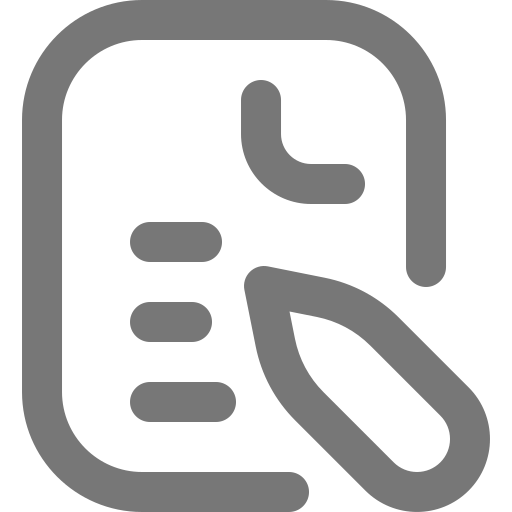History of the Ministry /brief/
History of the Ministry of Education and Science /brief/
In 1921, the revolution in Mongolia ended, and the People's Government established a modern educational institution with the goal of educating young boys and girls.
On August 14, 1921, the 11th Cabinet meeting discussed the issue of opening a school hall and educating children from an early age. The resolution on “establishing a primary school” was approved, and it was the first legal document to establish a modern education system in Mongolia.
It was decided to open the first school hall in the Russian building, which was at the time the General Committee on Telecommunications.
The history of the Ministry of Education and Science, or the State central administrative body in charge of education in Mongolia began on August 31, 1921 by the article 5 of the 14th Cabinet Meeting, with the resolution on “Subordinating primary schools to the Ministry of Internal Affairs and establishing school departments”. The resolution also appointed Dugarjav, an official of the Party Central Committee, as an official in charge of the school department, and appointed Jamsranjav, a scholar, to compile scriptures and chronicles that would be used in the school, as well as to appoint him as a specialist. As a result, in a democratic Mongolia, a government representative body was established to manage schools and issues related to education.
By the People's Government Resolution No. 53 of 1923, It was decided to merge the school department of the Ministry of Internal Affairs with the Institute of Scripture to form a special ministry. Accordingly, the People's Government decided to establish the “The Ministry of Public Enlightenment” by Resolution No. 31 of 1924, and on February 27, 1924 /on the first day of Lunar New Year/ the ministry received its seal, and was established officially, and the Government informed the ministries and province governors about the decision.
The structure of the “Ministry of Public Enlightenment” (1925)
According to the “Regulations of the Ministry of Public Enlightenment” approved by the Resolution No. 26 of the Council of Ministers of the Mongolian People’s Republic on August 31, 1925, the Ministry performed the following main functions. These include:

- To promptly eliminate illiteracy;
- To expand schools for workers, children, and to educate them with a work attitude;
- To develop and manage curriculums and methodologies for temporary and permanent schools;
- To train and retrain primary and secondary school teachers and public education workers, and to improve their professional skills;
- To develop a unified plan for cultural and educational work and compile statistics;
- To manage the works of provinces public education departments;
- Dissemination of research works;
- Publishing science, culture, art, school books and textbooks;
- To promote the goals and activities of cultural and educational institutions to the public;
- Protecting folk customs, historical and cultural objects, to perform operas, run theaters and make movies;
According to these functions, the Ministry was in charge of education, culture, art, and science as a whole.
- By the third resolution of the Council of Ministers of the Mongolian People’s Republic on January 28, 1928, the Political Council of Arts under the Ministry of Public Enlightenment was expanded and the "Institute of Arts of the Mongolian People’s Republic" was established under the Council of Ministers. It was later renamed as the Arts Commission. As a result, culture and the arts became no longer a part of the Ministry of Public Enlightenment.
- Decree No. 77 of the People's Congress of the Mongolian People’s Republic of April 27, 1959 merged the Ministry of Culture of the Mongolian People’s Republic with the Ministry of Public Enlightenment to form the "Ministry of Schools and Culture of the Mongolian People’s Republic." As a result, the ministry started to re-engage in education, culture and the arts.
- By Decree No. 119 of the Presidium of the National People's Congress of May 16, 1961, the Committee on Higher and Vocational Secondary Education was established under the Council of Ministers of the People's Republic of Mongolia. In addition, with the establishment of The Mongolian Academy of Sciences in 1961, the Ministry of Public Enlightenment was no longer responsible for the higher and specialized secondary education and science, but only for the pre-school, primary, and secondary education.
- By the 14th decree of the People's Congress of the Mongolian People’s Republic on January 26, 1968, the Ministry of Public Enlightenment and the Committee on Higher and Vocational Secondary Education under the Council of Ministers of the Mongolian People’s Republic were merged into the Ministry of Public Education. As a result, the ministry became responsible for preschool, general secondary education, primary and secondary vocational education, as well as higher education as a whole again.
- In connection with this change, the Council of Ministers of the Mongolian People’s Republic approved the organizational structure of the Ministry of Public Education by Resolution No. 26 of February 4, 1968 as follows:
- University department
- Specialized secondary school department
- School / general education / department
- Kindergarten department
- Printing /textbooks/ department
- Personnel department
- Foreign Relations Department
- Labor Education Department
- Administration and Economic Department
- In 1973, 1982, and 1984, the Ministry of Public Enlightenment and the Higher, Specialized, and Vocational Education Committees merged and separated several times.
- The Law of the Mongolian People's Republic of September 26, 1990 established Ministry of Education as a part of the structure of the Government of the Mongolian People's Republic. As a result, the ministry's responsibilities included pre-school, primary, secondary, and higher education as a whole.
- The Government law of July 30, 1992 merged the science and technology functions of National Development Agency and its staff with the Ministry of Education and reorganized it into the “Ministry of Science and Education”. As a result, the ministry was once again responsible for education, science, and technology.
- According to “The Government law of Mongolia” of May 6, 1993, the structure of the government contains “Ministry of Science and Education of Mongolia” and the powers of the Minister of Science and Education of Mongolia are defined as follows:
- Developing and organizing the implementation of national scientific, technical and technological policies.
- Developing and implementing an integrated education system and content policy at every levels.
- “Amendments to the Law on Government” of October 31, 1996 established the Ministry of Enlightenment within the Government of Mongolia.
- As a result, the name, structure, and organization of the ministry have changed to some extent over time. On August 3, 2000 it was changed to “Ministry of Education, Culture and Science”, on 2004 and 2008, the role and scope of the Minister remained unchanged, on August 16, 2012 it was changed to “Ministry of Education and Science”, on July 27, 2016, it became the “Ministry of Education, Culture, Science and Sports” and its scope of responsibilities were changed, and according to the appendix to the 7th resolution of the Parliament of Mongolia dated July 7, 2020, it was reorganized into the “Ministry of Education and Science”.
Photo 1. Literacy rate of the population by percentage










